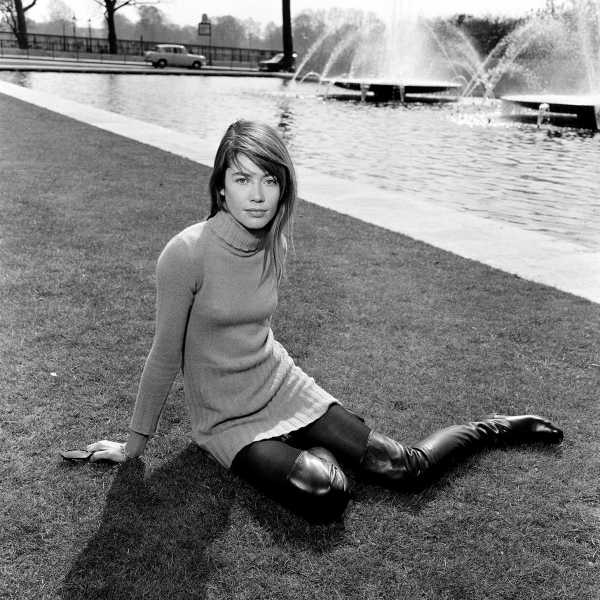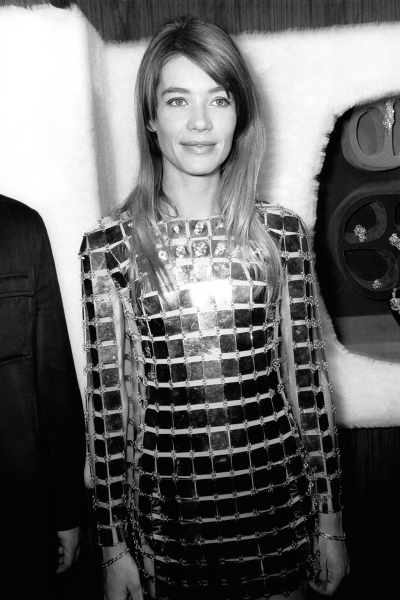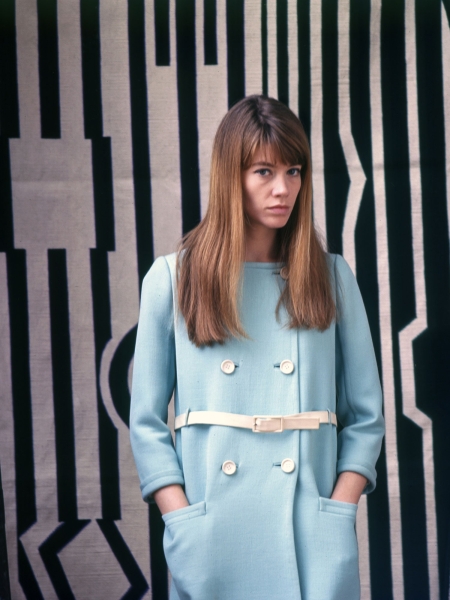“If it weren’t for the way I dress, no one would notice me,” Françoise Hardy told a reporter in 1969. This throwaway moment of absurdité belies the impact the melancholic, yet exquisite singer had not just on fashion, but culture. Rei Kawakubo borrowed one of the chanteuse’s “Tous les garçons et les filles” lyrics to christen her brand, Comme des Garçons; Bob Dylan wrote poetry for her; Malcolm McLaren remembered her as “the ultimate pin-up [on] most hip, Chelsea, beat bedroom walls”; and Mick Jagger crowned her his “ideal woman”. Scores of women, such as Alexa Chung, looked to Hardy and her cat-eye flicks as the definition of French-girl beauty, while designers, from André Courrèges to Nicolas Ghesquière, declared her not just a chic clothes horse, but “the very essence of French style”.

The songwriter had the Midas touch. Paco Rabanne’s silver paillettes sky-rocketed to popularity after the Vogue Records pin-up, who was the face of Paris’s yéyé (pop) genre, wore his dresses, including one weighing 20 pounds and crafted from 1,000 gold plaques, during performances. As an Yves Saint Laurent muse, Hardy was one of the original Le Smoking influencers, championing slick tailoring deemed androgynous in comparison to the miniskirts of the ’60s. But she similarly made bright white Courrèges separates–which she told Elle France made her “look like an alien”–her calling card. On Françoise, nothing–even her signature go-go boots–looked calculated or contrived. Her choppy fringe and mussed-up hair gave her an effortlessly gamine, rather than girly, air, which subsequently caught the attention of film directors curious about this “anti-Bardot” character.

Just two years after signing her first music deal and releasing cute tunes, such as “Oh oh chéri”, Hardy made her cinematic debut in 1963’s Château en Suède directed by Roger Vadim, and went on to star in Jean-Luc Godard’s New Wave great Masculin Féminin. But her film portfolio, which waned in the ’80s, could never compete with her discography, which boasts more than 30 albums, features collaborations with the likes of Damon Albarn and Iggy Pop, and Wes Anderson movie scores. Indeed, her path to music was set at the age of 16 when, after passing her baccalauréat, she requested a guitar from her single mother. Growing up in Paris, where she was born in 1944, it was strumming and dreaming for this self-professed shy talent, who still suffered stage fright decades into her career.

Her pensiveness is reflected in the title of her 2018-published memoir The Despair of Monkeys and Other Trifles, which is named after a favorite tree in the French capital’s Parc de Bagatelle. Its angular leaves, she said, reminded her of “men who have caused me despair.” (Could this have included David Bowie, who was said to be passionately in love with Françoise for years?). If all this only adds to Hardy’s mystique, her legacy is perhaps less enigmatic and rather, quite evident. She is the progenitor of that uniquely insouciant, nonchalant brand of French cool—one that is impossible to boil down, but which everyone would like to drink in. Hardy is survived by her son, Thomas Dutronc, who inherited the musical genes of both his mother and father, Jacques Dutronc, a musician whom Hardy married in 1981.

